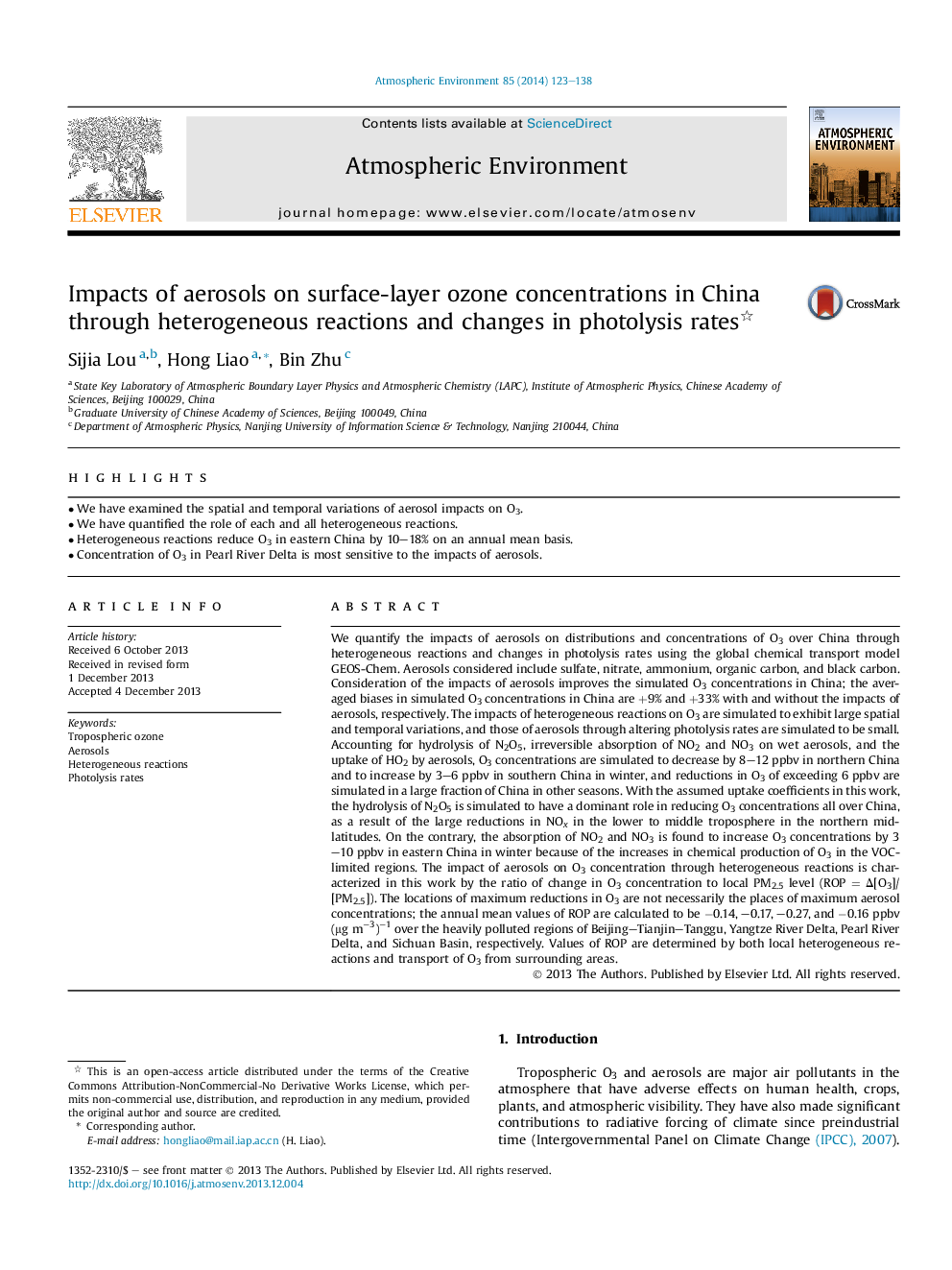| Article ID | Journal | Published Year | Pages | File Type |
|---|---|---|---|---|
| 6341016 | Atmospheric Environment | 2014 | 16 Pages |
Abstract
We quantify the impacts of aerosols on distributions and concentrations of O3 over China through heterogeneous reactions and changes in photolysis rates using the global chemical transport model GEOS-Chem. Aerosols considered include sulfate, nitrate, ammonium, organic carbon, and black carbon. Consideration of the impacts of aerosols improves the simulated O3 concentrations in China; the averaged biases in simulated O3 concentrations in China are +9% and +33% with and without the impacts of aerosols, respectively. The impacts of heterogeneous reactions on O3 are simulated to exhibit large spatial and temporal variations, and those of aerosols through altering photolysis rates are simulated to be small. Accounting for hydrolysis of N2O5, irreversible absorption of NO2 and NO3 on wet aerosols, and the uptake of HO2 by aerosols, O3 concentrations are simulated to decrease by 8-12 ppbv in northern China and to increase by 3-6 ppbv in southern China in winter, and reductions in O3 of exceeding 6 ppbv are simulated in a large fraction of China in other seasons. With the assumed uptake coefficients in this work, the hydrolysis of N2O5 is simulated to have a dominant role in reducing O3 concentrations all over China, as a result of the large reductions in NOx in the lower to middle troposphere in the northern mid-latitudes. On the contrary, the absorption of NO2 and NO3 is found to increase O3 concentrations by 3-10 ppbv in eastern China in winter because of the increases in chemical production of O3 in the VOC-limited regions. The impact of aerosols on O3 concentration through heterogeneous reactions is characterized in this work by the ratio of change in O3 concentration to local PM2.5 level (ROP = Î[O3]/[PM2.5]). The locations of maximum reductions in O3 are not necessarily the places of maximum aerosol concentrations; the annual mean values of ROP are calculated to be â0.14, -0.17, -0.27, and â0.16 ppbv (μg mâ3)â1 over the heavily polluted regions of Beijing-Tianjin-Tanggu, Yangtze River Delta, Pearl River Delta, and Sichuan Basin, respectively. Values of ROP are determined by both local heterogeneous reactions and transport of O3 from surrounding areas.
Related Topics
Physical Sciences and Engineering
Earth and Planetary Sciences
Atmospheric Science
Authors
Sijia Lou, Hong Liao, Bin Zhu,
